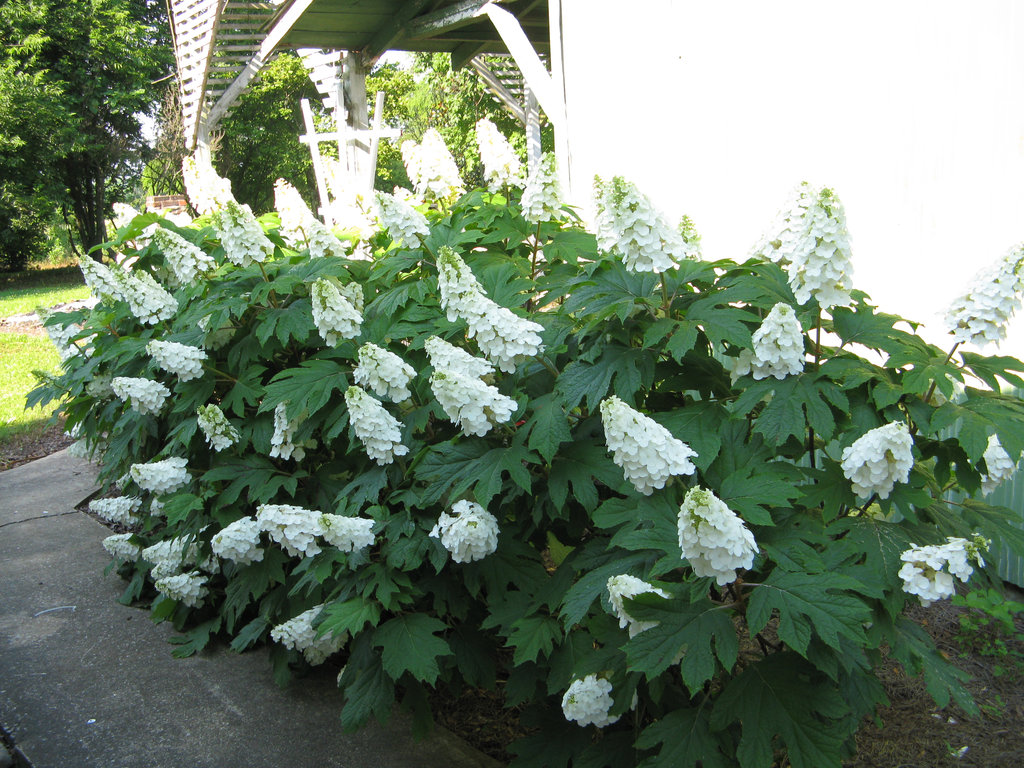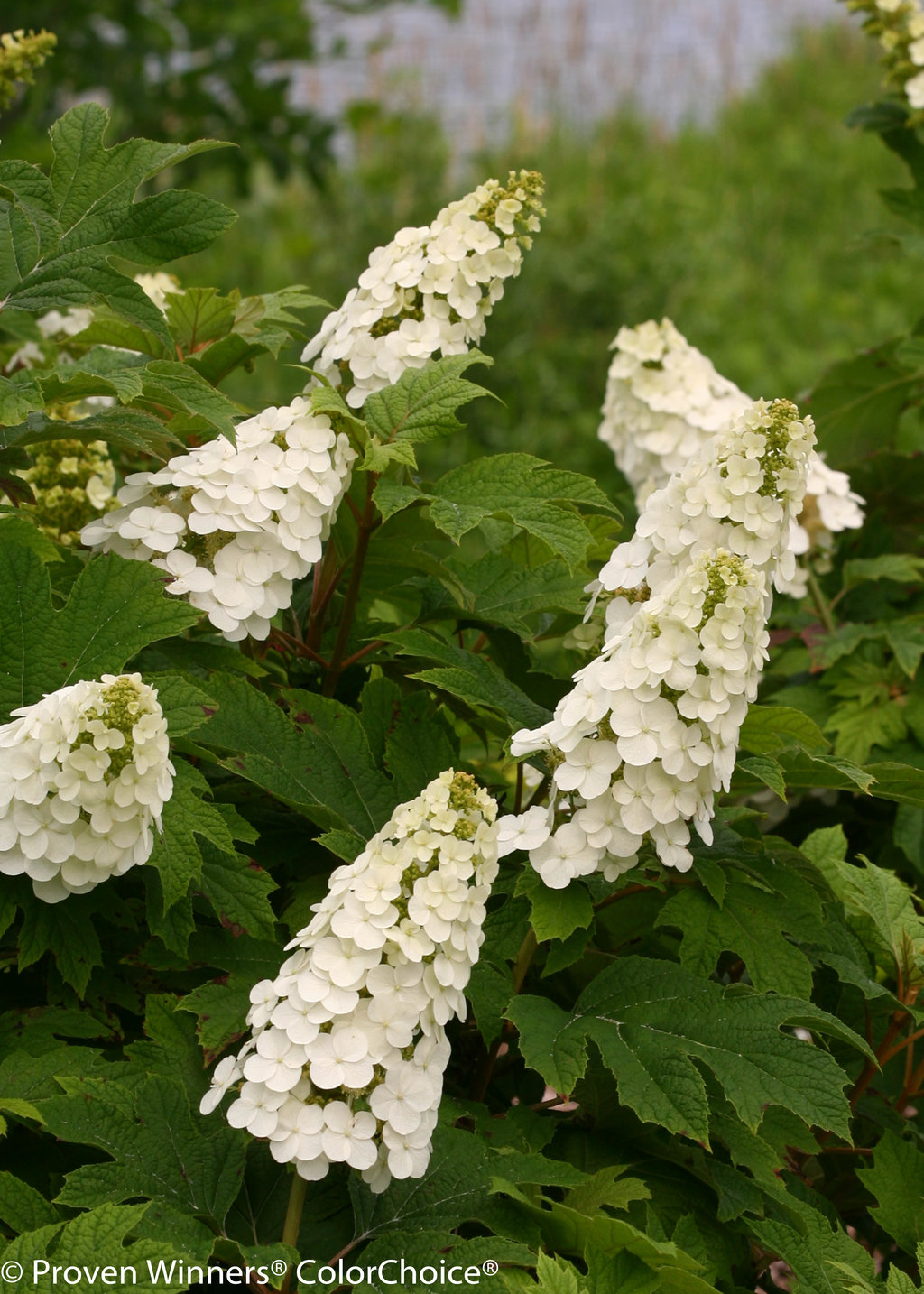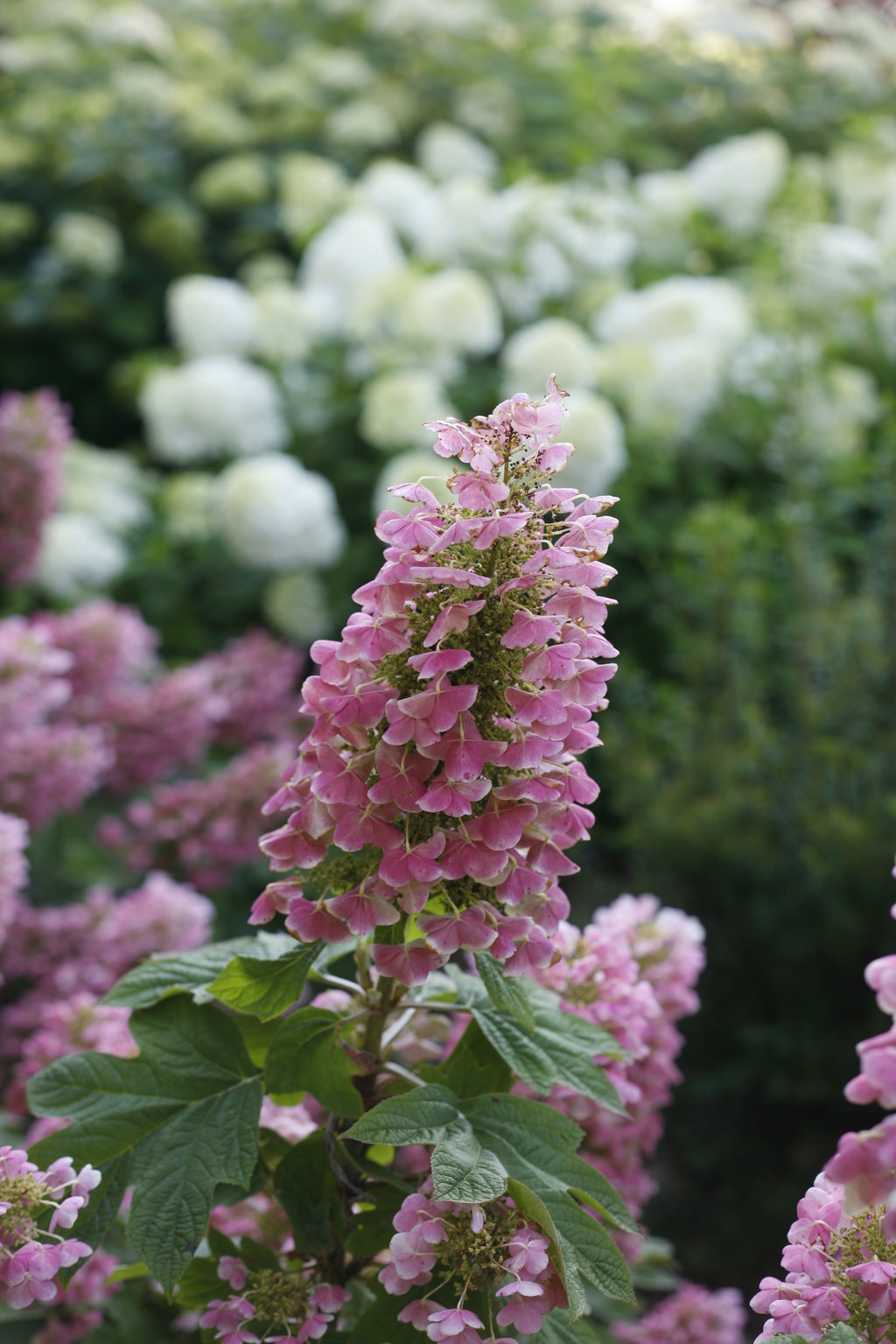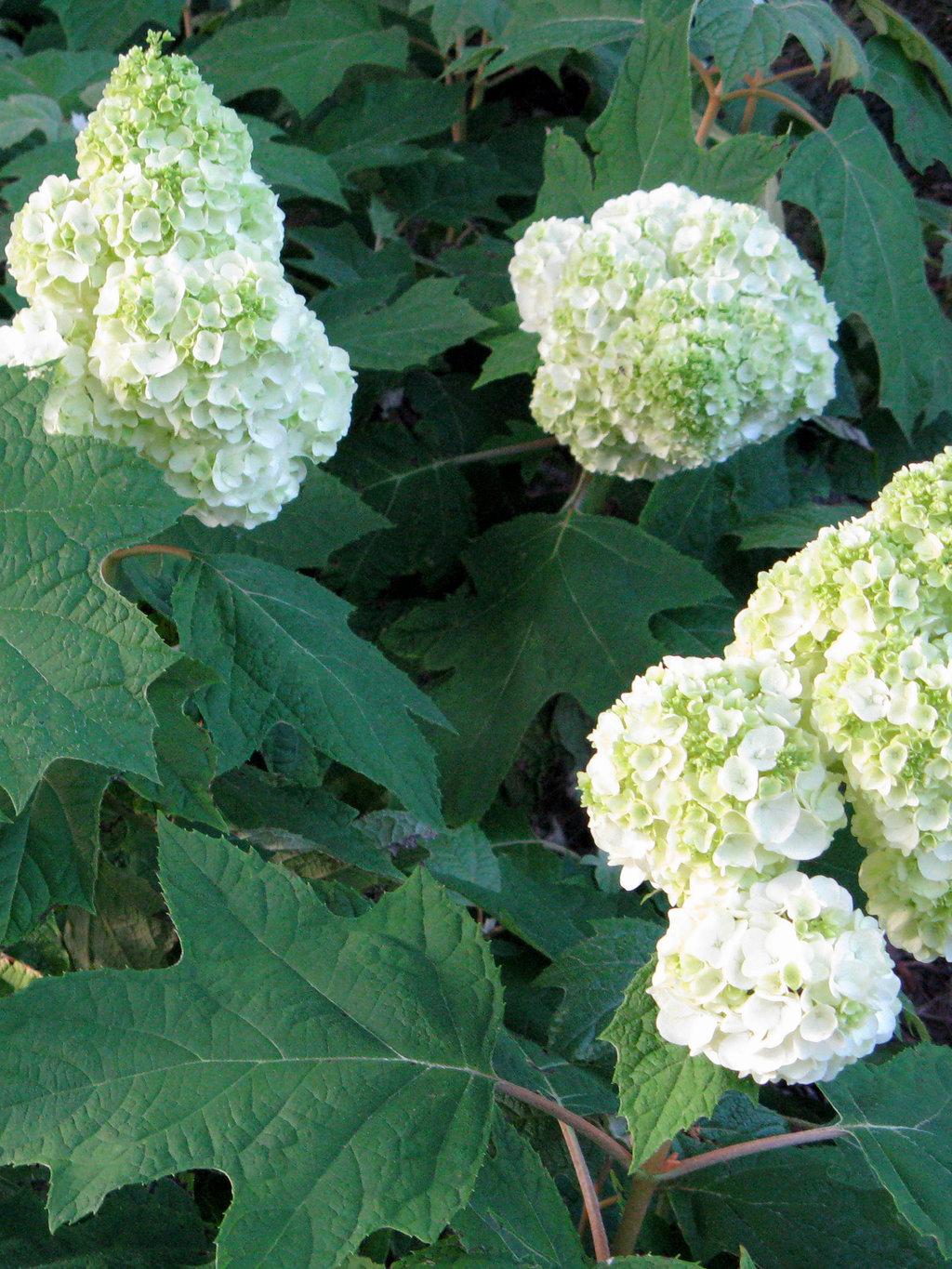Oakleaf Hydrangea - The Ultimate Growing Guide from Proven Winners®
Oakleaf hydrangea (Hydrangea quercifolia) is a deciduous shrub native to the southeastern US, grown for its attractive foliage, long-lasting flowers and four-season appeal.
Buy oakleaf hydrangeas - Order shrubs online and have them shipped right to your door
Named for the deeply lobed oak-like foliage, this multi-stemmed shrub grows 4-8 feet tall and wide with a compact rounded habit. Cone-shaped flower clusters appear from late spring to early summer, with single or multi-petaled white blooms that fade to shades of pink and mauve.
 In fall, the leathery green foliage turns vivid shades of purple, red and bronze. Cinnamon-brown peeling bark along the stems is revealed after the leaves drop off, creating winter-long interest. Hardy in USDA zones 5-9, oakleaf hydrangea is tolerant of different growing conditions. This versatile shrub can be used in woodland borders, foundation plantings, containers, or massed in the landscape.
In fall, the leathery green foliage turns vivid shades of purple, red and bronze. Cinnamon-brown peeling bark along the stems is revealed after the leaves drop off, creating winter-long interest. Hardy in USDA zones 5-9, oakleaf hydrangea is tolerant of different growing conditions. This versatile shrub can be used in woodland borders, foundation plantings, containers, or massed in the landscape.
PLANTING & CARING FOR OAKLEAF HYDRANGEA
How to plant: Follow these steps and space 4-8 feet apart, depending on the variety. Look to your plant’s tag for specific recommendations.
- Dig a hole slightly deeper than the root ball and 2-3 times wider.
- Remove the plant from the nursery pot and loosen the soil around the roots.
- Set the plant in the hole with the top of the root ball slightly above soil level.
- Backfill the hole with soil and tamp down slightly to remove air pockets. Water well.
- Apply a 2- to 3- inch layer of shredded bark mulch to retain moisture and suppress weeds.
Soil: Plant in slightly acidic soil with adequate drainage to prevent root rot. For containers, use a high-quality all-purpose potting mix.
Watering: Plants need regular water for healthy growth and optimal flowering. Keep soil evenly moist but not soggy. Water deeply to establish healthy roots. Oakleaf hydrangea is more drought-tolerant than other hydrangeas.
Fertilizing: In early spring, apply a granular fertilizer specially formulated for trees and shrubs according to package instructions. Reapply annually.
Mulching: Each spring, apply compost, shredded bark or other organic matter around the base of plants. For winter protection in colder climates, mound 6-8 inches of mulch around the base after the ground freezes in fall. Pull back the mulch in early spring to allow the soil to warm up.
TRY THESE PROVEN WINNERS® VARIETIES
Oakleaf hydrangea comes in different sizes and flower colors. Try these in your landscape:
 Gatsby Gal® is smaller than other varieties, reaching just 5-6 feet tall and wide at maturity. Large white flower panicles stand upright above the foliage, while fall color is vivid wine-red. The compact size is suitable for containers, foundation plantings, and smaller spaces such as side yards and entryways. |
 Gatsby Pink® produces big showy flower heads that start out snowy white, quickly fading to deep pink, offering months of color. Dark green foliage turns a rich burgundy-red in fall. Use this larger variety as a stand-alone specimen in an island planting, as tall hedging or screening along a property line. |
 Gatsby Moon® adds classic elegance to the landscape, with tightly packed pure white florets on distinctly pointed flower heads. The weather-resistant flowers assume lime-green highlights as they age, holding their color well through summer. Vibrant green foliage turns wine-red in fall. Use this larger variety for screening, hedging or woodland borders. |
OAKLEAF HYDRANGEA FAQ’s
How much sun does an oakleaf hydrangea need?
Oakleaf hydrangea does best with direct morning sun and some afternoon shade, particularly in hotter climates. Too much sun can result in foliage burn.
Will oakleaf hydrangea grow in shade?
Plants can survive in shade, but do best with at least half-day sun. Too much shade can result in leggy growth, fewer blooms, poor fall color, and an increased risk for diseases such as powdery mildew.
How big does an oakleaf hydrangea get?
Dwarf varieties can be as little as 3-4 feet tall and wide, while the average mature size of most varieties is 6-8 feet tall and wide.
Do you cut back oakleaf hydrangeas?
Avoid pruning this type of hydrangea except to remove dead branches in the spring once the plant starts to leaf out. Learn more about pruning hydrangeas.
When to plant oakleaf hydrangea?
The best time to plant oakleaf hydrangea is during the cooler months of spring or fall.
Do deer eat oakleaf hydrangea?
Oakleaf hydrangea is more deer resistant than other hydrangeas. However, some gardeners may experience deer browse, especially if other food is scarce.
What to plant with oakleaf hydrangea?
Oakleaf hydrangea is compatible with many other shrubs, trees, and perennials. Choose varieties such as woodland natives that prefer similar growing conditions.
HOW TO USE OAKLEAF HYDRANGEA IN YOUR LANDSCAPE
This versatile shrub can be used in many ways. Here are just a few ideas:
- Plant a smaller variety such as Gatsby Gal® in a container and place near an entryway or other well-trafficked area where the blooms and foliage can be enjoyed up close.
- Combine in a foundation planting with other shrubs that bloom at different times for continuous color.
- Use a larger variety such as Gatsby Pink® as a background plant in a mixed border for changing color in different seasons.
- Mass any variety along a slope for low-maintenance erosion control.
- Plant as a hedge to divide garden rooms or provide privacy along a property line.
- Use as an understory plant in a woodland border in combination with perennials and groundcovers for a layered effect.
COMPANION PLANTS
Combine oakleaf hydrangea alongside other plants with similar cultural needs of partial shade and moist soil.
Use oakleaf hydrangea in a foundation planting or border along with other shrubs such as:
- Sprinter® boxwood
- Little Henry® sweetspire
- Legend of the Fall® bottlebrush
- Castle Keep® blue holly
Underplant oakleaf hydrangea in a woodland border with perennials such as:
- Shadowland® ‘Seducer’ hosta
- Dolce® ‘Silver Gumdrop’ coral bells
- ‘Brilliance’ autumn fern
- ‘Pink Diamonds’ fern-leaved bleeding heart
For dazzling late season color, pair oakleaf hydrangea with:
- Prairie Winds® ‘Desert Plains’ fountain grass
- Rock ’N Round™ ‘Pure Joy’ stonecrop
- ‘Little Goldstar’ black-eyed Susan
- Pearl Glam® beautyberry




